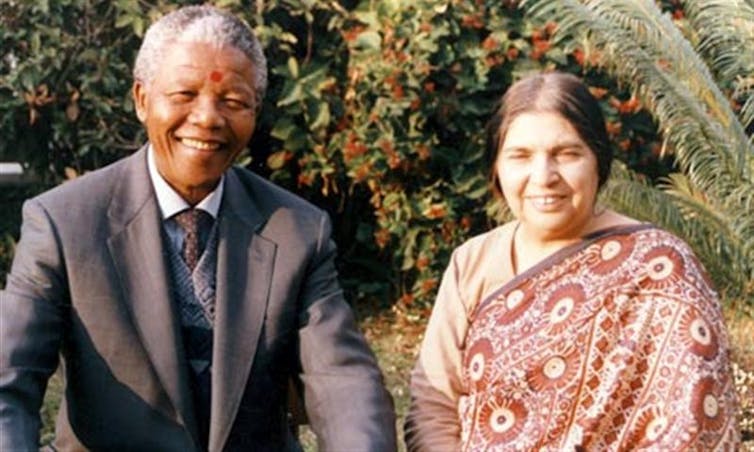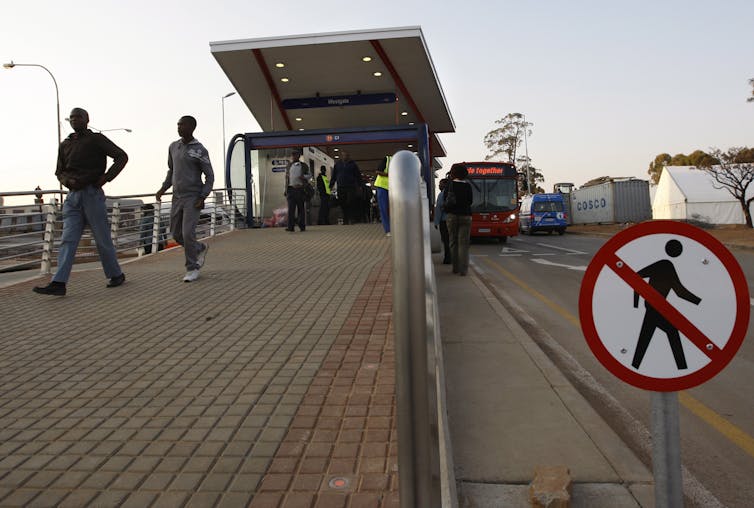
South Africa’s president faces a difficult time ahead, following the loss of his bid to escape justice.
GCIS
The Supreme Court of South Africa’s rejection of President Jacob Zuma’s appeal against an earlier judgment that he face 783 criminal charges has renewed uncertainty about his future.
The earlier High Court ruling had found that the 2009 decision by the National Prosecuting Authority (NPA) to withdraw the charges of corruption, money laundering and racketeering against Zuma was irrational.
The judgment forms part of three milestones in Zuma’s recent history dominated by corruption, unethical conduct and his ability to avoid criminal charges. These were, firstly, the Schabir Shaik case in which Zuma’s financial advisor was convicted of corruption as a result of his relationship with him. The second was the Nkandla case that involved the use of public funds on lavish renovations to Zuma’s private homestead. The Constitutional Court found that Zuma had acted illegally and in a way that was inconsistent with the Constitution.
The third is the latest case, known as the “spy tapes” case. This involved intercepted discussions in 2007 between the then National Director of Public Prosecutions Bulelani Ngcuka and Leonard McCarthy (head of the then elite crime-fighting unit, the Scorpions) about the timing of Zuma’s indictment. Mokotedi Mpshe, who succeeded Ngcuka in an acting capacity, withdrew the charges in 2009, arguing that these discussions showed the charges were politicised.
The “spy tapes” saga returned with the application by the opposition Democratic Alliance to be given a copy of the tapes Mpshe used to exonerate Zuma. It was followed by another application for a judicial review of Mpshe’s decision. The High Court subsequently declared Mpshe’s decision irrational. This view has now been affirmed by the Supreme Court of Appeal.
Complications
A number of factors are going to complicate Zuma’s options after this judgment. The first is that, unlike most other states, the South African legal system does not include presidential immunity or amnesty.
The second factor is about timing. Zuma’s term as president of the governing African National Congress ends in December when the party is due to elect a new leader. He will at that point lose most of his political power and will therefore be less able to protect himself by co-opting key figures in the criminal justice system.
It’s against this background that his preference for Nkosazana Dlamini-Zuma to succeed him is part of his strategy to avoid being convicted during his retirement.
Implications of the judgment
The implications of the Appeal Court judgment for a Zuma counter-strategy are important. The first one is that the relevance of the spy tapes has been removed. The fact that the Court concluded that the motive for charging a suspect is irrelevant and that procedural questions can only be settled by the trial court, removed the contextual arguments of political misappropriation of judicial processes and also important discretionary options from the NPA.
The second one is that the judgment made it impossible for the National Director of Public Prosecutions to review his own decisions and that only a trial court could do it. Again, it limits the NPA’s discretion.
The third one is that the Supreme Court of Appeal raised serious concerns about the NPA’s integrity in 2009, the quality of its legal interpretations and the serious internal differences of opinion. This will become a major test of the NPA’s credibility.
The fourth implication is that the rationality principle has been reinforced. The final decision taken by the National Direct of Public Prosecutions Shaun Abrahams will be subjected to the same test.
The Supreme Court of Appeal did not spell out in any detail what steps the NPA should take next. Two interpretations have emerged: the one is to take the process back to 2009 and that the charges must be reinstated by the NPA. The second one is that the matter should be considered anew by the NPA. This would have to include Zuma’s insistence that he makes presentations before he can be indicted.
The scene is therefore set for legal game-playing. What’s clear is that the decision about Zuma’s indictment will not be finalised and implemented any time soon.
Implications of a Zuma trial
What are the implications of a Zuma court case in the near future?
The first is that having him in court would have a negative effect on government activities until 2019. This can’t be used as an excuse not to prosecute him – in any case this would amount to another irrelevant political motive which the Appeal Court has, in principle, disqualified. A power void would nevertheless cascade down the tiers of government.
The second possible implication is that, if summonsed, Zuma would have no choice but to resign of his own accord. If this happened, an Acting President would have to be appointed and a new President elected within 30 days. This could either be the new ANC President, due to be chosen at the party’s conference in December, or a caretaker president (as happened previously) until 2019.
The third possibility is that Zuma would be forced to resign in the same way that the governing ANC forced Thabo Mbeki out of presidency in 2008. Given its inherent potential to create instability and lead to splits in the ANC makes this the worst case scenario.
All three possible outcomes are not only detrimental to Zuma, but also to the ANC in general. Revelations that are bound to come out in any court case will seriously embarrass the ANC and will provide ample ammunition for the opposition in an election campaign. This would be true whether Zuma was still president or not.
This leaves presidential hopeful Cyril Ramaphosa and the part of the ANC that is aligned to him with a conundrum. They have characterised themselves as being anti-corruption as well as striving for the moral renewal of the ANC. They would have to weigh this against the countervailing effects of having Zuma on trial.
Dirk Kotze, Professor in Political Science, University of South Africa
This article was originally published on The Conversation.






